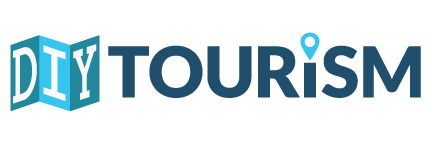Major developments in the digital world have changed how tourism marketing works.
The highest purpose of tourism marketing is to strengthen a region’s economy by promoting local businesses and experiences. Campaigns targeted to tourists can help local companies — as well as the cities and towns they are based in — stand out from the competition, attract new visitors/customers, and generate brand awareness. But tourism-related businesses often struggle to keep up with the best practices for tourism marketing amid the race to meet the ever-changing needs of customers.
To help you understand the latest challenges and opportunities for businesses that rely on tourists, we have put together this guide to the evolution of tourism marketing.
1. The Explosion of Social Media
Some of the biggest social platforms came online in the early 2000s — Facebook, YouTube, Twitter, etc. — and blew marketing wide open as an industry in general.
And when socially focused digital booking systems like Airbnb and VRBO came onto the tourism scene, the tourism marketing ecosystem changed forever when it came to short-term rentals. Today, as many cities tighten restrictions on these types of rentals, and as remote work becomes more commonplace, some destinations find they are increasing the number of long-term rentals.
Websites like Airbnb also added experiences to their list of offerings, not just lodging. More people and brands will be able to market products and services through these types of websites as this practice continues and increases.
2. Artificial Intelligence
Search engines and social media feeds began using artificial intelligence and machine learning, which changed how people received info across the web. One of the biggest changes happened in 2015 when Google incorporated its first machine learning, RankBrain, into Google’s algorithms. By 2016 the RankBrain algorithm was expanded to include all queries and searches happening on Google.
Travel companies can now easily track customer reviews, comments on social media, and other mentions about the company. AI can analyze online guest reviews and quickly respond to negative feedback to ensure a positive online presence and brand reputation.
Today, voice search is the new evolution of AI. More than 20% of people use voice search on a weekly basis, whether it’s to order products online, get directions, or look up a fact — and that number is expected to grow.
Consumers expect brands, retailers, and destinations to understand what they want and when they want it. If they don’t, they might lose out on those consumers.
3. Digital Advertising
Marketers were able to get very specific when it came to targeting their digital ads on social media and beyond. By targeting interests, behaviors, and demographics that were unique to your tourist destination, you could capture the exact right audience and compel them to visit.
Advertising quickly became one of the most important factors to help the tourism industry generate visitors from both the local and international marketplace. According to data from Expedia Group Media Solutions, 78% of consumers said they’ve made a travel choice based on promotions or ads that they felt represented them through messaging or visuals.
4. Geolocation
Smartphone and mobile technology made it possible for travelers to plan their trips any time they wanted. The advancement of geolocation meant people could quickly explore what is right outside their door — a huge benefit for tourism marketing.
According to a Google survey from December 2020, searches for “available near me” grew globally by more than 100% since 2019. In 2021, these searches were up another 60% according to SearchEngineLand. The top categories for those searches were:
- Food (84%)
- Entertainment (56%)
- Banking (50%)
- Apparel (41%)
- Personal Care (38%)
5. The COVID-19 Pandemic
The pandemic has created a world that is far less predictable, which has resulted in many people reevaluating their priorities. Not only did traveler behavior and priorities change, but tourism organizations and businesses began to evaluate the brand values that they stand for. Regions also started to think more deeply about how tourism impacts local residents. It has become even more important that tourism dollars benefit the communities that are directly impacted by tourism.
According to the Booking.com 2021 Sustainable Travel Report:
- 46% of Americans have changed their views on sustainable travel because of the pandemic.
- 74% of Americans believe increasing cultural understanding and preserving cultural heritage is crucial.
- 65% of Americans will shy away from traditionally popular destinations and attractions to more evenly spread the economic benefits of tourism to less-visited communities.
Tourism marketing is unlike any other industry. It’s complex, diverse, challenging, and unpredictable. Tourism-related businesses often find it difficult to stay alive because it requires the ability to remain in tune with the ever-changing desires and needs of the customers, as well as the ever-changing landscape of the industry itself.
Asheville is the ultimate tourism success story in the southeast, and we have hands-on experience growing our mountain town to where it is today. Learn more at the next DIY Tourism Marketing Workshop. Buy your ticket today.
